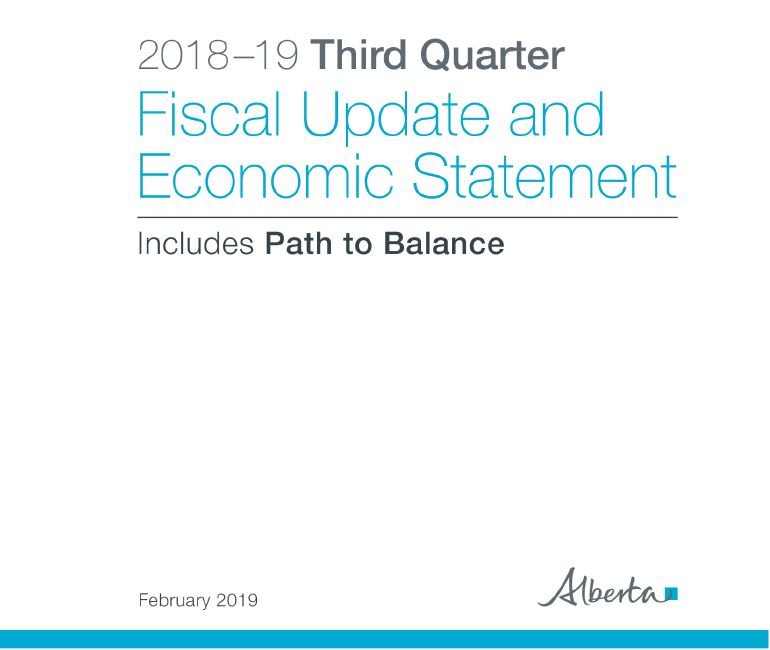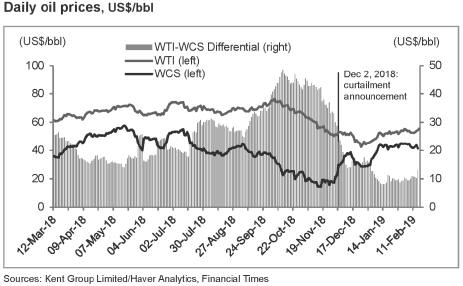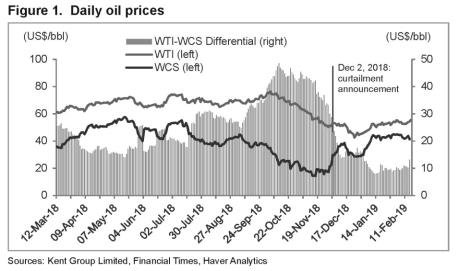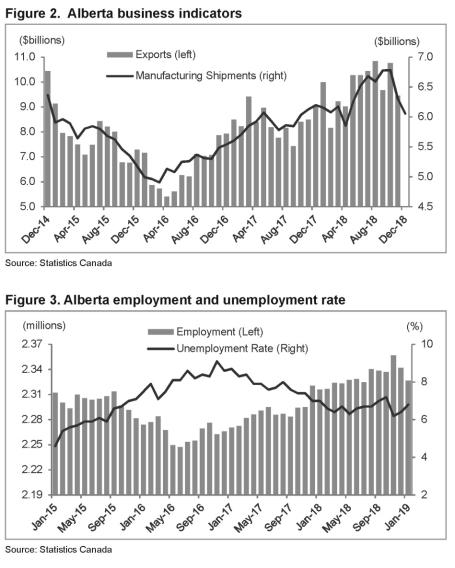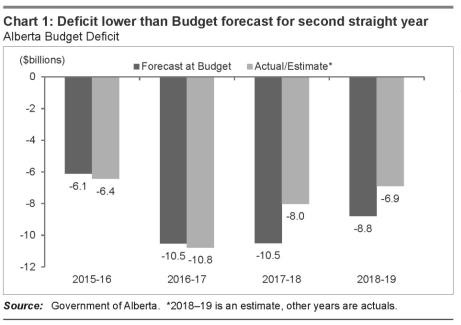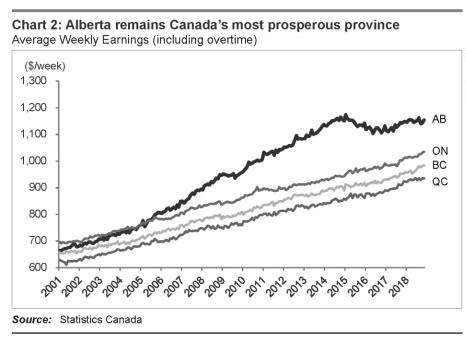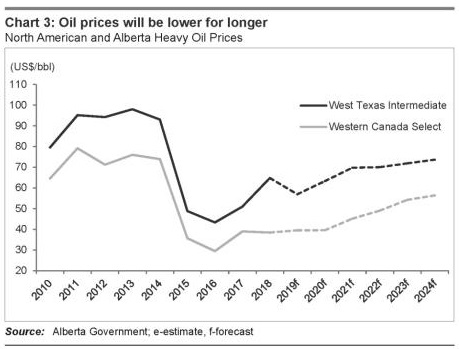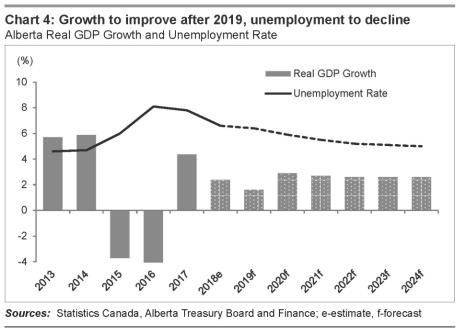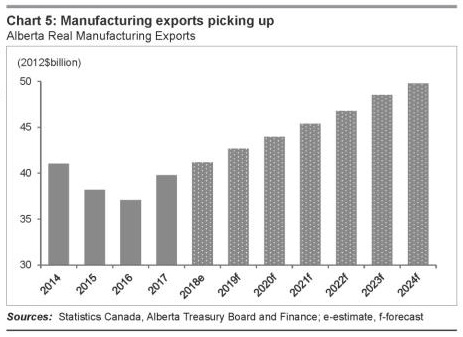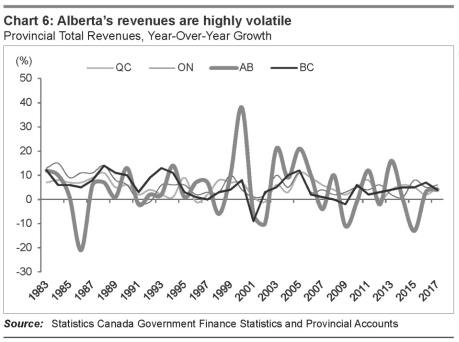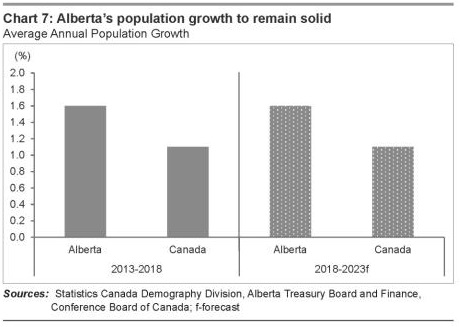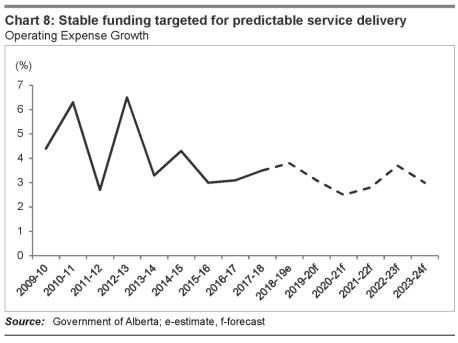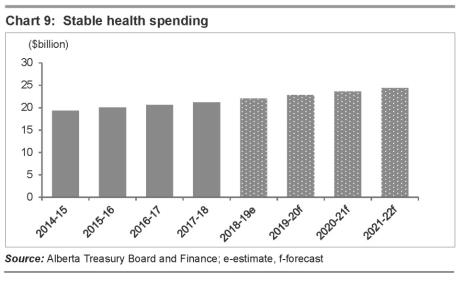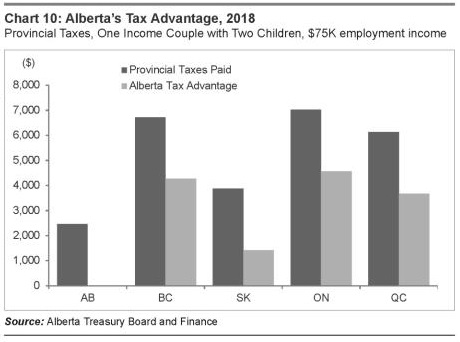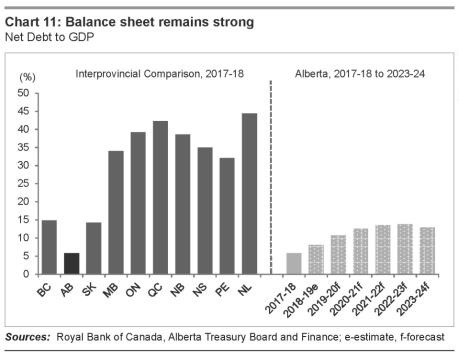Market access impacts 2019 Though not all Albertans are feeling it, Alberta’s economic recovery continued in 2018. Almost 44,000 jobs were added last year, supported by broad-based strength in most sectors of the economy. Manufacturing expanded, led by petrochemicals and food processing. Energy exports also increased, propelled by high oil prices and production in the first part of the year. In the last quarter of 2018, momentum in Alberta’s economy slowed as global oil prices weakened due to concerns over slowing demand, exacerbated by continued global supply growth. Alberta producers, facing market access issues from transportation bottlenecks and pipeline delays, saw severe discounts for Alberta crudes. Facing historically high light-heavy oil price differentials, the Alberta government responded to protect Alberta jobs and the value of resources owned by Albertans. The government negotiated increased access to markets by rail. Short-term production curtailment was introduced to enable the draw down of excess barrels of Alberta crude and reverse | | the extreme widening of the light- heavy differential. All the while, the government continued its efforts to shed light on the harm to Canadians of limited market access through an advocacy campaign on the benefits of the Trans Mountain pipeline throughout the country. Despite these actions, the combination of declining global oil prices and substantial spike in the light-heavy oil price differential in the fall, dampened growth expectations, and weighed on corporate investment, household spending and residential construction decisions. As a result, weakness from late 2018 is expected to carry into early 2019, before the economy picks up in the second half and into next year. Overall, Alberta real GDP growth forecast for 2019 has been revised to 1.6%. Market access, as well as ongoing global market and geopolitical risks, will continue to contribute to significant volatility in oil prices and the light-heavy oil price differential, impacting Alberta producers, federal and Alberta government revenue, Canadian taxpayers and Albertans. |
